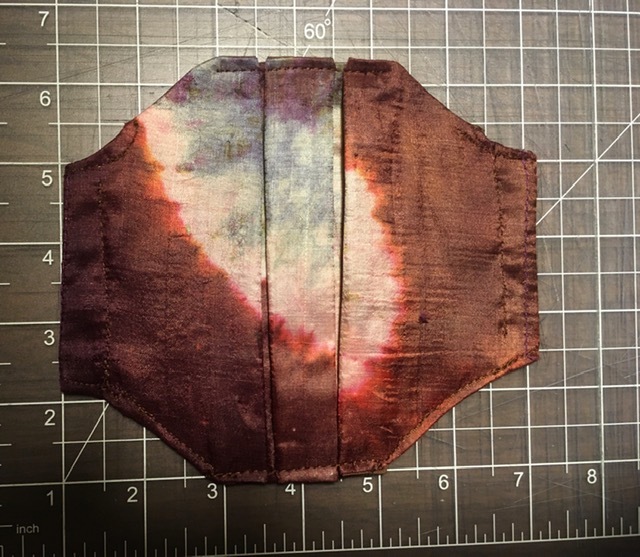New horizons in masking
Dec. 1st, 2020 03:18 pmI had finally gotten bored with making masks, and then I found this intriguing new design, which seems to be all the rage online. See the difference? The pleats are VERTICAL instead of HORIZONTAL! How radical! The box pleat in the middle expands over the nose to provide more breathing space, and the pleats on either side allow the mask to expand sideways and puff out into a satisfyingly 3D profile. Very cool. 
It's the latest thing in DIY mask making, and there are a bunch of how-to videos. But sadly, I have yet to find one that I don't hate everything about except the pleats. Every single one that I have found utilizes those loathsome sewn in ear loop fasteners. And a couple of them just ignore the whole idea of a filter pocket, even though it's so easy to leave the sides open on this style of mask. It was easy to modify the pattern to leave the filter pocket accessible, but a lot harder to find an easy way to add the side channels that I prefer. Briefly, getting the measurements right for those diagonally cut corners was non-trivial, at least for someone like me with poor visualization skills. But I think I finally got it. I will gladly provide details for anybody who wants to actually try making one of these; otherwise tldr.
But the biggest problem is that every one of these How-to videos insists "there is no need for a nose bridge!" Sorry, folks, that just isn't true. What they really mean is, "No easy way to install a nose wire with those pleats across the top, so let's just declare that we don't need one." The nose does fit better with the box pleat than with a horizontally pleated mask, but not close enough to keep my glasses from steaming up. And if glasses are steaming up, that means air is leaking out the top and the mask isn't really doing its job.
So.... I ordered a little pack of self-adhesive aluminum strips meant to be used as nose bridges on masks. I tried it out on a couple of masks and it seems to do the job (my test case is just to put on the mask and vigorously hike up the hill in front of my house from 40th to 41st Street). Now I just need to find a better way to keep the nose bridge in place. The adhesive is good enough for a test run, but obviously isn't going to work long term. I have a few ideas.